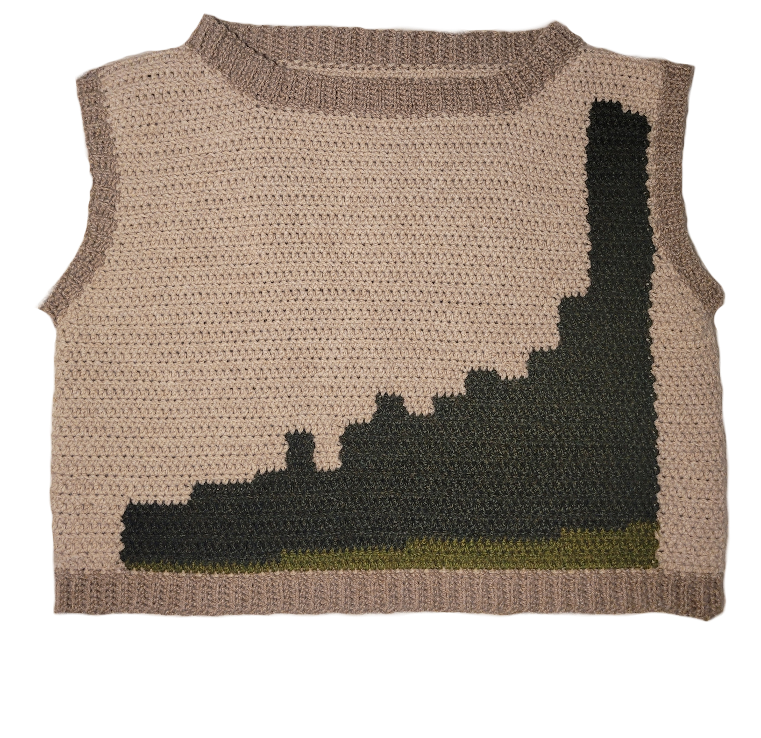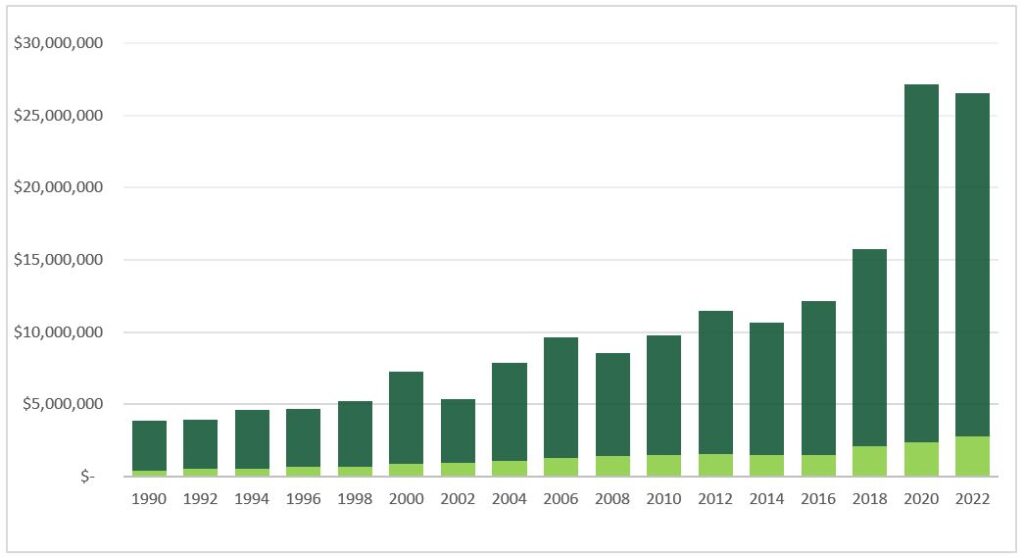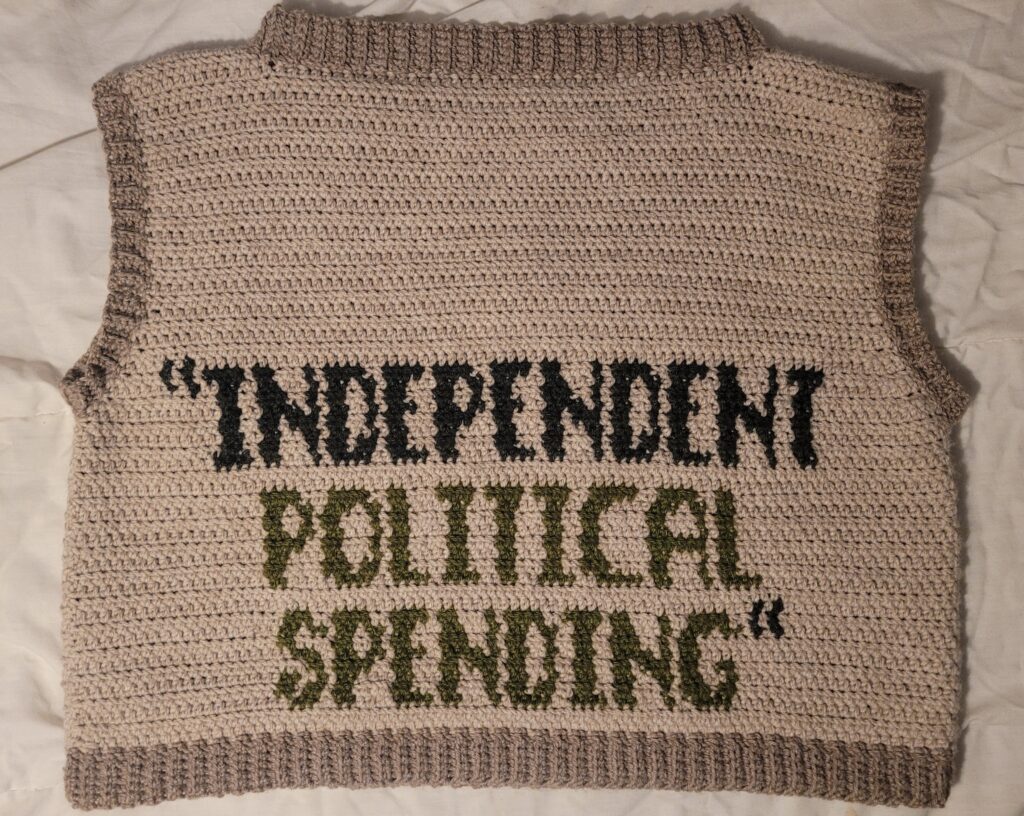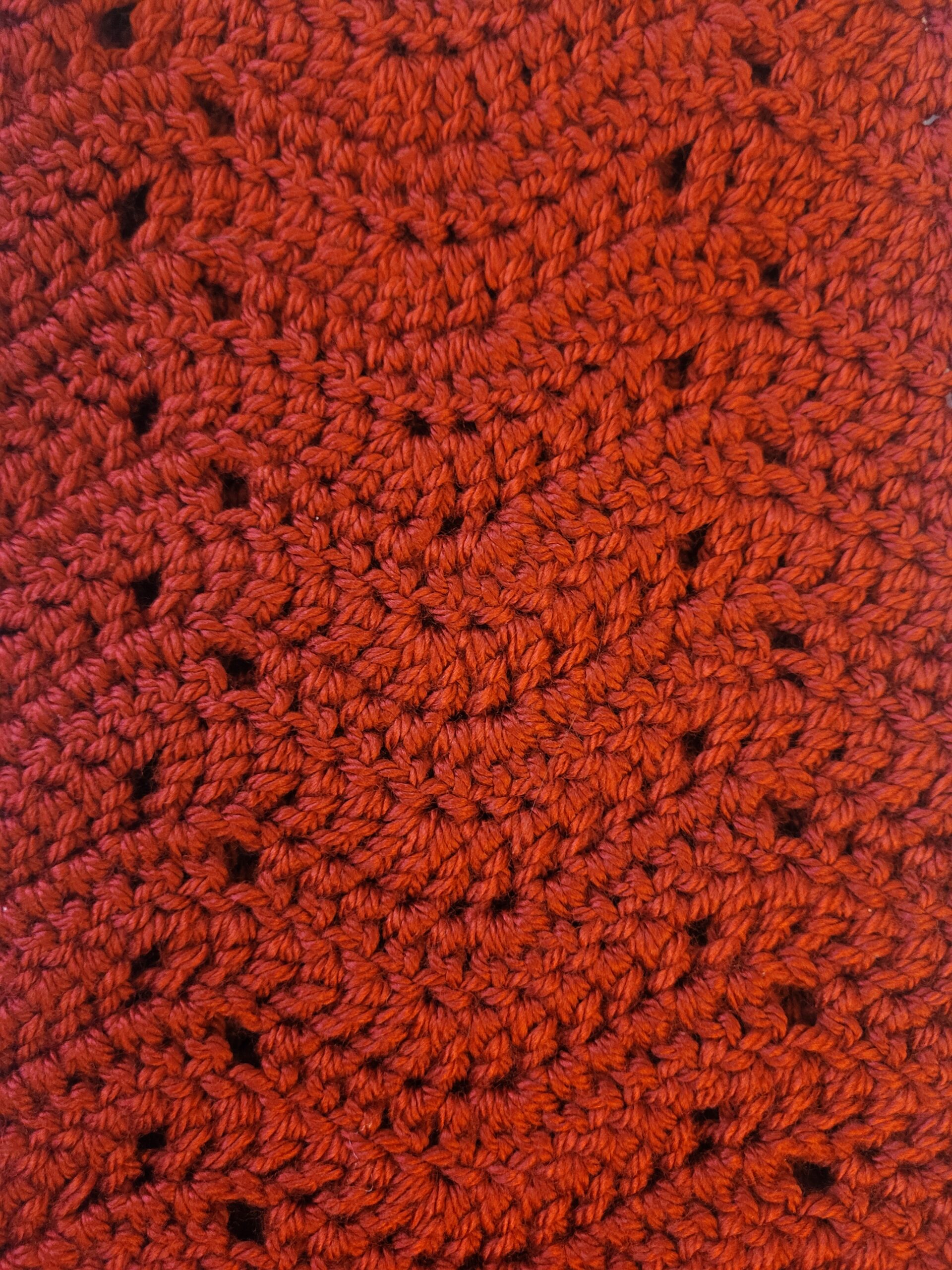Federal elections in the United States have grown significantly more expensive over time, especially since Citizens United vs FEC in 2010 where the Supreme Court ruled that corporate spending is a form of free speech.
This decision allowed outside groups to spend unlimited amounts of ‘independent’ money in congressional elections and resulted in the creation of super PACs.

As we breakdown what the vest signifies, reflect on how money can impact the electoral process and campaigns in general in the United States.
Understanding the Cost of congress vest
The vest represents the average amount spent by a winning congressional campaign from 1990 – 2022. The data for this came from Open Secrets, or the Center for Responsive Politics.
On the vest, the light green indicates the cost for House of Representatives campaigns while dark green indicates the cost for Senate campaigns.

From the data, we see that the average cost for both chambers of Congress has increased over the years.
While the increase has not been the same across the board, the average winner for Senate campaigns spent over $26 million in 2022 while the House of Representatives winners spent almost $2.8 million.
When compared to the average spending of congressional campaign winners in 1990, $3.9 million and $407.5 hundred thousand respectively, this jump in spending is especially striking.
Understanding Campaign Finance
There are many actors at play in campaign finance and fundraising. While donation limits and regulations vary by state for local and state elections, federal campaigns and organizations are governed by the same rules.
These regulations are enforced by the Federal Elections Commission (FEC), which also provides publicly available data on who donates to campaigns and where campaigns are spending their money.
Below is a brief overview of the basic federal donation limits and organizations involved.
- Federal Campaign Committees – the campaigns themselves
- Have contribution limits
- Individuals, Native American tribes, and unincorporated businesses can donate up to $3.3k per election
- PACs and party committees can donate up to $5k per election
- Campaign committees can give other federal campaigns $2k per election
- Must disclose all contributions they receive that add up to $200 or more from one source
- Must disclose all spending (expenditures) greater than or equal to $200 to one source
- Have contribution limits
- Political Action Committees (PACs) – organizations that raise and spend money for political purposes
- Use money to help candidates they believe will support their causes get elected
- PACs can range from corporate to employee to issue-based
- For example: the American Israel Public Affairs Committee PAC; National Association of Realtors PAC; Verizon PAC
- Federal PACs have the same disclosure requirements as federal campaigns and must be registered with the FEC to operate
- Super PACs
- Make independent expenditures
- money spent to further a cause or campaign ‘independent’ of that cause or campaign
- such as advertising or mailers
- Can raise unlimited funds
- Can have connections to dark money (money with undisclosed origins) despite disclosure requirements
- Make independent expenditures

Impacts on Democracy
While money is not the only factor in a candidate’s success, it can be an influential one, as exemplified by the fact that over 90% of candidates that spend more also win their elections. How can money impact campaigns and election outcomes?
For one, the increasing cost of congressional campaigns makes running for higher office unobtainable for most citizens in the United States. In other words, money influences who, or what in the case of ballot initiatives, shows up on the ballot. In the 116th congress, for example, a majority of members of Congress were millionaires.
It also encourages those in Congress to do ‘call time‘, which is when a candidate sets aside time to personally make phone calls to big time donors to fundraise for their campaigns. This not only takes time away from their job, but favors those who have business and financial connections in the first place.
Without limits on ‘independent’ spending, special interest groups are able to spend millions to oppose candidates that do not agree with their business interests, such as candidates who go against big tobacco or certain political positions, like AIPAC in the 2022 election cycle. By donating unlimited amounts to super PACs, millionaires and billionaires are able to inequitably influence outcomes without necessarily having to disclose their donations and involvement as well.
“Over the past decade two great trends contended when it came to the role of money in politics: small donors empowered by the Internet and large donors ushered in by the Supreme Court.”
Waldman, 224-225
Conclusion
Though money does not guarantee a winning campaign—as seen with Rick Caruso, who spent 12 times more than his opponent in the 2022 Los Angeles Mayoral race and still lost—it can greatly impact the electoral process in the United States.
Removing limits on corporate and ‘independent’ spending has resulted in increasingly expensive election cycles. 2022 was the most expensive midterm ever at $8.9 billion overall.
Despite this, small-dollar donors and grassroots organizing are making a difference across the country by supporting less wealthy candidates and electoral reforms that make it easier for people to vote.




works cited
“Election Trends”. Open Secrets: Following the Money in Politics. https://www.opensecrets.org/elections-overview/election-trends. Accessed 26 April 2023.
Waldman, Michael. The Fight to Vote. Simon & Schuster Paperbacks, 2022, pp. 224-225.

